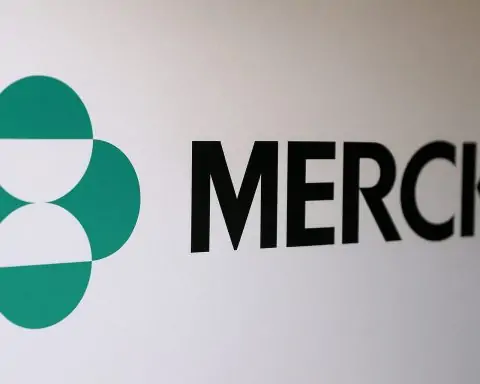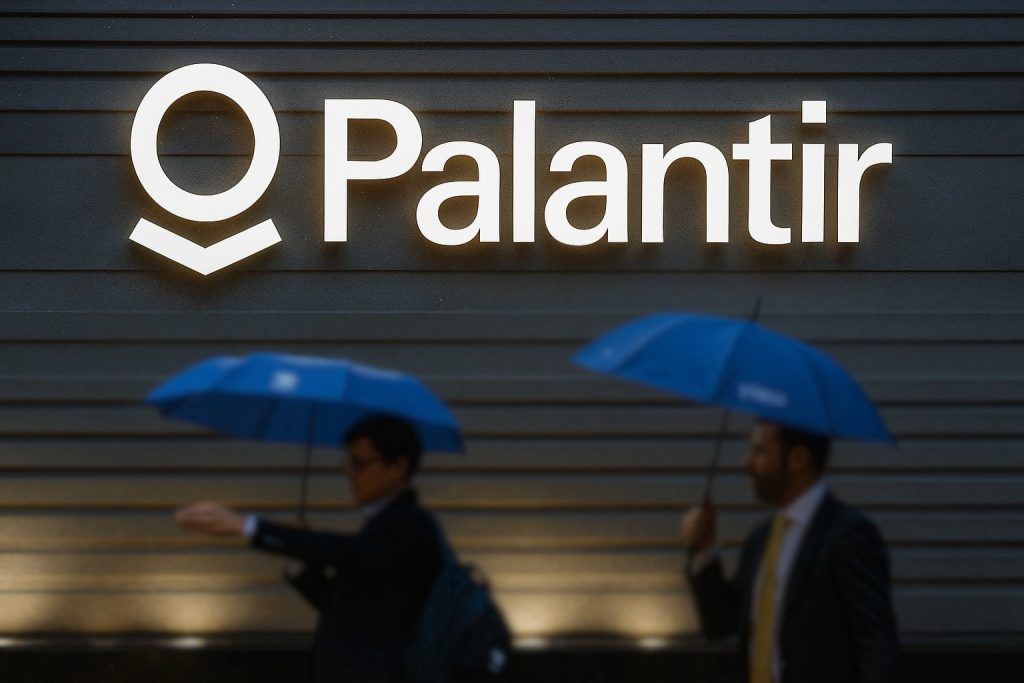Netflix stock (NASDAQ: NFLX) is trading higher today, 18 November 2025, as investors digest the company’s fresh 10‑for‑1 stock split, blockbuster Q3 numbers, options-market fireworks, and new chatter about a possible Warner Bros. Discovery deal.
Key takeaways for Netflix stock today (18.11.2025)
- Price action: Netflix trades around $111–112 per share, up roughly 1.2% today, with intraday lows near $109 and highs just under $113.
- Post‑split trading: The 10‑for‑1 forward stock split became effective at the open on Monday, November 17, dropping the share price to roughly one‑tenth of its previous level without changing the company’s value. [1]
- Earnings backdrop: Q3 2025 revenue jumped about 17% year over year to ~$11.5 billion, but profit missed expectations after a $619 million Brazil tax charge — even as Netflix logged its best ad‑sales quarter ever. [2]
- Analyst moves:Barclays cut its Netflix price target to $110 (Equal Weight), while JPMorgan trimmed its target to $124 but still sees double‑digit revenue growth and margin expansion into 2026. [3]
- Options signal: Call option activity is four times normal levels, with a bullish put/call ratio of 0.42 and heavy trading in near‑term upside calls. [4]
- Strategic overhang: According to a New York Times report relayed by The Fly, Netflix, Comcast and Paramount are preparing arguments as to why each should be allowed to buy Warner Bros. Discovery, raising the stakes in the streaming arms race. [5]
This article rounds up the most notable Netflix stock news and market data published or updated on 18 November 2025, along with the immediately relevant background from recent weeks.
Netflix stock price today: how NFLX is trading
As of the latest U.S. session on Tuesday, November 18, 2025, Netflix shares are trading around $111.6, up about $1.3 on the day (roughly +1.2%). The stock has moved between approximately $109.25 and $112.93 so far, on volume a bit above 12 million shares, which is running below its recent ~40 million‑share average daily turnover. [6]
The longer‑term picture remains powerful:
- Barchart data shows Netflix is up about 33% over the last 12 months, 130% over five years, and nearly 1,000% over the past decade, with gains exceeding 4,000% over 15 years. [7]
- Reuters recently highlighted that shares had climbed more than 360% over the past three years as of late October, even after a pullback from this year’s highs. [8]
In short, even after the split and recent volatility, Netflix is still one of the market’s biggest long‑term winners — and that context matters when thinking about today’s modest move.
10‑for‑1 stock split: NFLX now trades at one‑tenth the old price
The headline corporate event driving attention this week is Netflix’s 10‑for‑1 forward stock split:
- The Board approved the split on October 30, 2025.
- Shareholders of record as of the close on Monday, November 10, 2025 received nine additional shares for every one they held.
- Those extra shares were distributed after the close on Friday, November 14, and trading began on a split‑adjusted basis on Monday, November 17. [9]
That’s why the stock “crashed” from around $1,100+ to about $110–115 literally overnight: each pre‑split share simply turned into 10 lower‑priced shares. Financial Express, among others, walked readers through the math and emphasized that the total investment value is unchanged — one share around $1,140 on Friday becomes ten shares around $114 on Monday. [10]
Why Netflix did the split
According to Netflix’s own press release, the purpose is to “reset the market price” into a range that’s more accessible to:
- Employees receiving stock options, and
- Retail investors who prefer full shares over fractional ones. [11]
Analysis from Simply Wall St adds that the move may also help boost liquidity and broaden the company’s shareholder base at a time when Netflix is seeing strong international growth and accelerating advertising revenue. [12]
This is Netflix’s first split since 2015 (7‑for‑1) and its third in roughly two decades (after a 2‑for‑1 split in 2004), as Motley Fool’s Nasdaq‑syndicated piece points out — implying management tends to split the stock roughly once every 10–11 years when the price has run ahead of many individual investors’ budgets.
Q3 2025 earnings: strong growth, one‑off tax hit
Behind today’s trading and the split is a complicated Q3 story that markets are still digesting.
Headline numbers
From Barchart, Reuters and other earnings coverage:
- Revenue: about $11.5–11.51 billion, up roughly 17% year over year, and broadly in line with Wall Street expectations. [13]
- Earnings per share (EPS): around $5.87, which missed consensus (around the high‑$6 range) largely because Netflix booked a $619 million tax expense tied to a dispute with Brazilian authorities. [14]
- Ad business: Netflix recorded its best advertising quarter ever, with management saying ad revenue is on track to more than double this year, though it hasn’t disclosed exact figures. [15]
On a net basis, Barchart notes that net income rose to about $2.55 billion, up from roughly $2.36 billion a year earlier, even after the Brazil tax charge. [16]
Guidance and margins
Management guided to:
- Q4 revenue growth of about 17% year over year, continuing the current trajectory. [17]
- Full‑year 2025 sales growth of around 16% to ~$45.1 billion. [18]
- A slight trim to operating margin guidance, from 30% to 29%, almost entirely because of the one‑off Brazil tax hit rather than a structural deterioration in the underlying business. [19]
Netflix has also shifted away from reporting subscriber numbers, pushing investors to focus more on revenue, profits and free cash flow. Reuters notes that with no sub count to latch onto, some skeptics have become hyper‑sensitive to any sign of slowing growth or rising competition, contributing to the post‑earnings volatility in the share price. [20]
Wall Street reaction: price targets come down, but most ratings stay bullish
Barclays: Equal Weight at $110
A new note from Barclays, reported today, cut Netflix’s price target from $1,100 to $110 to reflect the split and maintained an “Equal Weight” rating:
- The new target implies roughly 1–2% downside from the stock’s prior close.
- MarketBeat data shows the firm’s move comes in the context of an overall “Moderate Buy” consensus rating, with an average analyst target of about $134 per share post‑split. [21]
Barclays’ stance suggests Netflix is fairly valued after its big multi‑year run, even if the underlying business remains strong.
JPMorgan: Neutral at $124, still sees growth
Separately, JPMorgan lowered its Netflix price target to $124 from $127.50, keeping a Neutral rating. The bank attributes Netflix’s roughly 11% slide since the Q3 report to: [22]
- Investor nerves about potential media acquisitions (more on Warner Bros. Discovery below),
- Worries about user engagement and intensifying competition, and
- A broader rotation away from high‑multiple growth names in the recent market pullback.
Even so, JPMorgan’s updated model — now adjusted for the 10‑for‑1 split — still assumes that:
- Revenue can grow around 11–13% in 2026,
- Operating margins and free cash flow continue to improve, and
- GAAP earnings could grow roughly 20% next year. [23]
In other words, JPMorgan sees solid fundamentals but thinks much of that is already in the price.
Consensus: still a Buy overall
Looking across the Street:
- MarketBeat’s tally shows 2 “Strong Buy,” 30 “Buy,” 12 “Hold” and 1 “Sell” ratings, averaging out to “Moderate Buy” with an average target around $134 per share. [24]
- Public.com’s analyst‑rating dashboard similarly finds 31 analysts covering Netflix with an overall Buy consensus, roughly 80% of them in the Strong Buy/Buy camp and a small minority recommending Hold or Sell. [25]
- QuiverQuant’s forecast page notes a median price target of about 1,425 on the pre‑split share price, which translates to roughly $142.50 per post‑split share; most recent targets cluster in the $1,350–$1,525 pre‑split range (about $135–$152 post‑split) from major brokers like KGI, Piper Sandler, Guggenheim, Wells Fargo and Canaccord. [26]
Put together, the Street still generally likes Netflix, but there’s much more debate around valuation, competition, and how much future growth is already baked into the current price.
Options market: call buyers pile in
If analysts are cautious but constructive, the options market is flashing a short‑term bullish signal.
A report on TipRanks (via The Fly) flagged unusually heavy call activity in Netflix today: [27]
- About 100,000 call options traded, roughly four times the typical volume.
- Implied volatility ticked higher to around 32.5%.
- The most active contracts are near‑dated out‑of‑the‑money calls — specifically the Nov‑25 $113 and $115 strikes, with nearly 13,900 contracts combined.
- The put/call ratio stands at 0.42, meaning far more calls than puts have traded.
- Options traders are also watching the next earnings date, currently expected around January 20, 2026. [28]
High call volume and a low put/call ratio don’t guarantee anything, but they do suggest that short‑term speculators are betting on more upside as the market digests the split and earnings news.
Social, insider and fund flows: mixed signals under the hood
QuiverQuant’s round‑up of social chatter and alternative data paints a nuanced picture of sentiment beneath the surface: [29]
- X (Twitter) discussion: The 10‑for‑1 split and 17.2% Q3 revenue growth have sparked excitement, especially about Netflix’s booming ad business. At the same time, some users worry about slowing subscriber momentum, high content spending (around $17 billion for 2025), and guidance that shows only modest margin improvement.
- Insiders: QuiverQuant tracks hundreds of insider sales with virtually no insider purchases over the past six months, reinforcing a perception that executives and board members are using the strong share price to lock in gains. [30]
- Hedge funds and institutions: Recent 13F data shows some big swings — for example, large additions by Canada Life Assurance and Alyeska Investment Group, offset by substantial selling from GQG Partners, Capital World Investors, JPMorgan and FMR. [31]
None of this is unusual for a mega‑cap that has rallied so far, but it does highlight that not all sophisticated money is on the same side of the trade.
Warner Bros. Discovery takeover chatter: a new overhang
One of the biggest narrative shifts in the last 24 hours concerns potential M&A.
According to a New York Times report summarized by The Fly and relayed on TipRanks, Netflix, Comcast and Paramount are each preparing arguments to make to regulators and policymakers about why they should be allowed to buy Warner Bros. Discovery (WBD) — or at least parts of it. [32]
Key points from that reporting:
- The discussions are pre‑deal positioning rather than confirmed offers.
- Any acquisition would revolve around both money and politics, because a tie‑up between a major streamer and WBD’s vast content library would be a huge antitrust and media‑policy issue in Washington.
For Netflix shareholders, this matters because:
- A serious bid for WBD could mean tens of billions in incremental spending or debt, on top of Netflix’s already large content budget.
- It could also dramatically reshape the streaming landscape if Netflix were to combine its platform with HBO/Max content, sports rights, and WBD’s big studio franchises.
JPMorgan’s latest note explicitly cites “media acquisitions headlines” as one reason for the post‑earnings pullback, highlighting that investors are nervous about the risk of a large, complex deal on top of everything else Netflix is trying to do. [33]
Right now, the WBD story is a speculative overhang, not a done deal — but it’s clearly on the market’s radar.
Competition and the YouTube factor
Competition has always been part of the Netflix story, but the tone is changing.
A detailed explainer from BollywoodShaadis — drawing on mainstream financial coverage — highlights how YouTube is emerging as a more direct rival in long‑form, premium storytelling, not just short clips. The piece argues that: [34]
- YouTube is investing more heavily in episodic and long‑form content, leveraging its massive creator base and ad‑supported model.
- Netflix, in turn, is pushing ad‑supported subscription tiers, live programming, and creator partnerships, with both companies aiming to increase viewer time and advertising dollars.
- This shift could intensify the “streaming war” and pressure Netflix to keep spending heavily on content while also proving that its advertising business can become a major profit driver.
At the same time, Nasdaq’s summary of a Motley Fool article notes that Netflix still dominates U.S. streaming viewing time (other than YouTube itself) and continues to build a slate of global franchises — from Stranger Things to One Piece — that keep users locked in.
Reuters adds that analysts are increasingly focused on whether Netflix’s advertising program can “accelerate growth” enough to justify its valuation, especially now that subscriber numbers are no longer reported. [35]
What analysts are modeling for the years ahead
Beyond the next quarter or two, several research and data platforms have published long‑term scenarios:
- The Barchart analysis highlights Wall Street forecasts for revenue to climb from about $39 billion in 2024 to roughly $68 billion in 2029, with adjusted earnings rising at a strong double‑digit pace over the same period. [36]
- Simply Wall St’s narrative envisions revenue of about $59.4 billion and earnings around $17.7 billion by 2028, implying a fair value estimate near 1,350 per share pre‑split — roughly $135 per current share, which would be more than double today’s price. [37]
- QuiverQuant’s compilation of broker targets broadly supports that bullish long‑term trajectory, with most major firms still rating the stock Outperform or Buy and only a handful neutral or on the sidelines. [38]
Of course, these are forecasts, not guarantees. They depend on Netflix successfully:
- Scaling its global content investments without letting costs run away,
- Turning its ad‑supported tier into a major growth engine, and
- Navigating the competitive and regulatory risks around any potential acquisitions.
What to watch next for Netflix stock
For investors and traders following Netflix stock on 18.11.2025, here are the main catalysts to monitor from here:
- Next earnings (expected around January 20, 2026):
Markets will be looking for confirmation that Q4 revenue growth lands near the 17% guidance and that margins tick back up as the Brazil tax charge fades. [39] - Ad‑tier traction and engagement metrics:
With subscriber counts no longer reported, commentary around viewing hours, ad loads, and ad‑tier uptake will be crucial to the valuation story. [40] - Any concrete move on Warner Bros. Discovery:
Even rumors of formal bids, regulatory reactions, or alternative deal structures could swing Netflix shares significantly in either direction. [41] - Competitive moves from YouTube, Disney+, Amazon and others:
Price changes, ad‑product launches, or big sports/entertainment rights deals across the industry all feed into how investors handicap Netflix’s long‑term moat. [42] - Macro and rate environment:
As a high‑growth tech/media name, Netflix remains sensitive to interest‑rate expectations and risk appetite — something JPMorgan explicitly references in its caution about rotation out of high‑multiple stocks. [43]
Bottom line
On 18 November 2025, Netflix stock is modestly higher as the market settles into trading the newly split shares.
- The fundamental story — strong double‑digit revenue growth, a rapidly scaling ad business, and a hefty but manageable content budget — remains intact.
- The valuation story is trickier: analysts are trimming price targets, options traders are betting on more upside, and alternative data show insiders selling while some big funds buy and others head for the exit.
- Layered on top of that is M&A speculation around Warner Bros. Discovery and the ever‑present competition from YouTube and fellow streamers, all of which could reshape the narrative again in the months ahead.
For now, consensus still views Netflix as a buy‑rated leader in streaming, but the gap between bulls and skeptics is widening — and that tug‑of‑war is exactly what’s playing out in the share price around $111–112 today.
This article is for informational purposes only and does not constitute financial advice, investment recommendation, or an offer to buy or sell any securities. Always do your own research and consider consulting a licensed financial professional before making investment decisions.
References
1. ir.netflix.net, 2. www.barchart.com, 3. www.marketbeat.com, 4. www.tipranks.com, 5. simplywall.st, 6. www.marketbeat.com, 7. www.barchart.com, 8. www.reuters.com, 9. ir.netflix.net, 10. www.financialexpress.com, 11. ir.netflix.net, 12. simplywall.st, 13. www.barchart.com, 14. www.barchart.com, 15. www.barchart.com, 16. www.barchart.com, 17. www.barchart.com, 18. www.barchart.com, 19. www.barchart.com, 20. www.reuters.com, 21. www.marketbeat.com, 22. www.tipranks.com, 23. www.tipranks.com, 24. www.marketbeat.com, 25. public.com, 26. www.quiverquant.com, 27. www.tipranks.com, 28. www.tipranks.com, 29. www.quiverquant.com, 30. www.quiverquant.com, 31. www.quiverquant.com, 32. simplywall.st, 33. www.tipranks.com, 34. www.bollywoodshaadis.com, 35. www.reuters.com, 36. www.barchart.com, 37. simplywall.st, 38. www.quiverquant.com, 39. www.barchart.com, 40. www.reuters.com, 41. www.tipranks.com, 42. www.reuters.com, 43. www.tipranks.com








